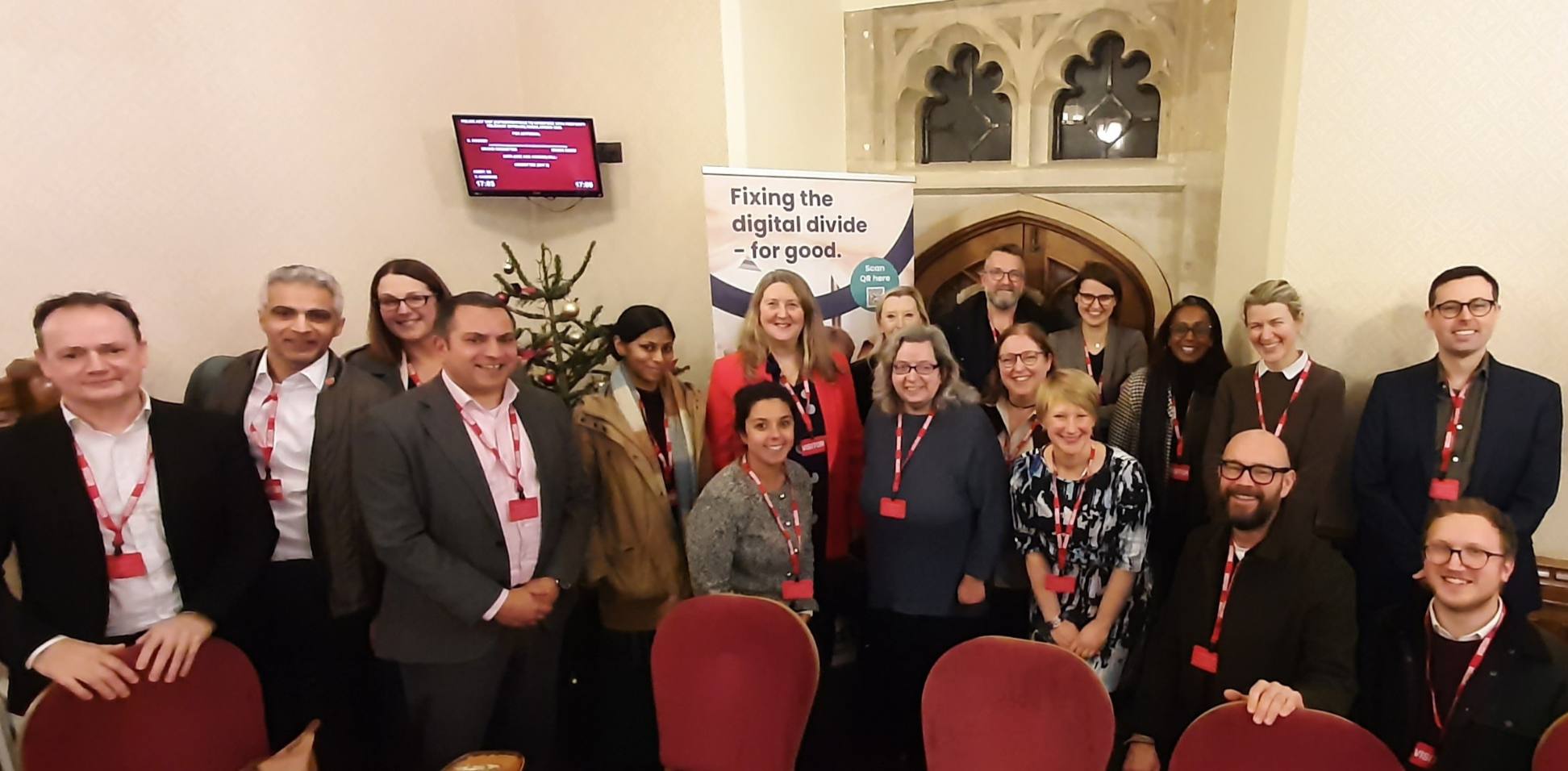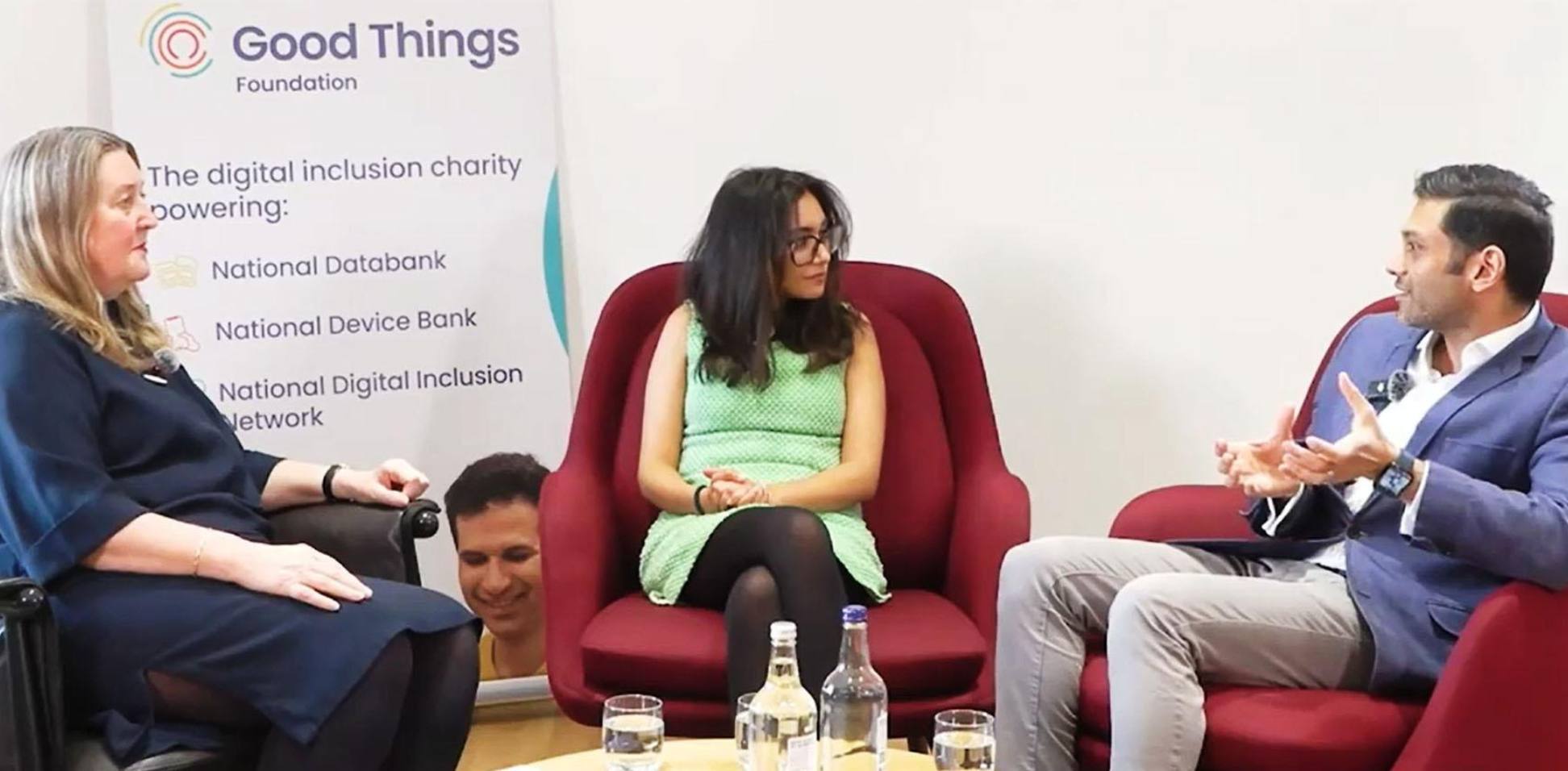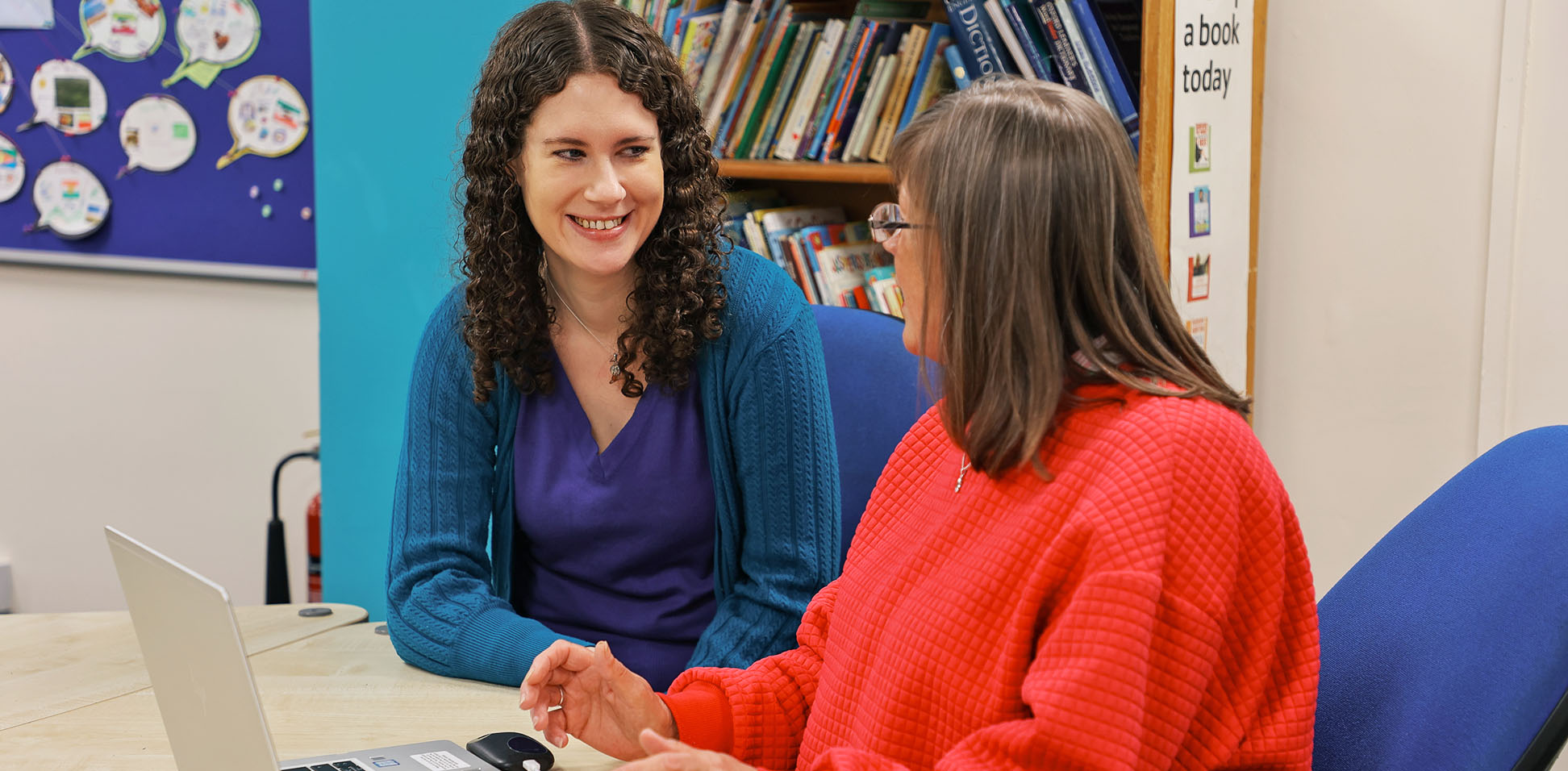What Judith taught me about the impact of our corporate partnerships
Our Director of Business Development and Partnerships, James Muscat-Sharp reflects on his first ten months at Good Things Foundation.
Judith* wanted to send a message to her grandchildren. She knew exactly what she wanted to say - her phone was open, the messaging app ready, the words formed in her mind. But her fingers wouldn’t cooperate. At first glance, it didn’t look like a digital problem. It was something more elemental: the cold. That deep, creeping kind of cold that numbs the hands and dulls even simple movements. Judith told me this happens often. She can’t afford to keep her home properly heated, and when the temperature drops, her fingers seize up. It's hard to type when your hands are frozen.
We showed her how to use speech-to-text: a simple technical fix, straightforward to many, but just out of reach for someone without basic digital skills. Judith was connected, yes—but like 7.9 million people in the UK today, she lacked the know-how to make the most of that connection. It was a small adjustment, but the effect was instant. Her face lit up.
That encounter at a community hub in Birmingham has stayed with me - not because it was extraordinary, but because it wasn’t. It was everyday. A reminder that digital exclusion is rarely a standalone issue. It lives at the intersections: with poverty, with loneliness, with health.
Our Digital Nation 2025 report reveals:
- 1.9 million households struggle to afford mobile contracts
- 29% of older adults feel left behind by services moving online
- 31% of adults don’t access health services online
Above all, it reinforced a truth I’ve come to see more clearly each day in this role: some of the most powerful solutions to our most pressing challenges are already within reach if we choose to work differently.
Ten months in, and everything feels urgent - and possible
I joined Good Things Foundation in late 2024 after more than a decade in higher education. The contrast was immediate. I went from the scale of a university to a tight-knit team of fewer than 50. From long planning cycles to an organisation agile enough to move from idea to implementation in a matter of days.
But the biggest shift wasn’t just in pace, it was in purpose. What struck me most was the clarity with which Good Things Foundation approaches partnership.
Not as a euphemism for sponsorship. Not as a tick-box exercise or philanthropic side project. But as genuine, strategic alignment between sectors that are often viewed as separate. When the charitable and corporate come together with care and intent, they can achieve things neither could accomplish alone.
A model built on shared purpose
Over the past few years, Good Things has developed a new kind of partnership model, one built on trust, mutual ambition, and the belief that social impact and commercial success don’t have to live in separate silos. We help businesses transform charitable giving into strategic investment, with real, measurable outcomes.
Our strategic partnerships invite businesses in as co-creators. These partnerships are long-term (typically three years or more) and backed by unrestricted funding that gives us the freedom to be bold and responsive. In return, we bring our strengths: a network of more than 7,300 community partners through the National Digital Inclusion Network, deep subject knowledge, strong policy connections, and a proven ability to turn ambition into impact.
We also run more focused collaborations - targeted research, innovation projects, corporate donations, and campaigns - which all have immense value. But it’s the strategic partnerships that show the greatest promise. They don’t just sustain our work, they evolve it.
Evidence, not theory
In my short time at Good Things Foundation, I’ve seen what this looks like in practice:
- We’re supporting Accenture with their goal to help one million people become AI-literate
- We’ve deepened collaborations with Virgin Media O2 and VodafoneThree, whose support underpins the National Databank and National Device Bank — providing free mobile data and devices to those who can’t afford to connect
- With Nominet, through the Data Poverty Lab, we’re pushing for deeper understanding of digital exclusion
- And we’ve secured new investment to grow our work further.
This isn’t about soft metrics. It’s about tangible outcomes — about how the work we do as partners ultimately reaches real people, like Judith, and helps them reconnect with the world.
Why does digital inclusion matter now?
The Government’s recent Digital Inclusion Action Plan is a welcome move - it shows world-class leadership that puts people at the heart of policy, a growing rarity in today’s chaotic geopolitical climate. But its success will hinge on what happens beyond Westminster: in communities, in boardrooms, in partnerships formed far from Whitehall.
The scale of digital exclusion in the UK is vast but not insurmountable. Addressing it requires smarter policy and deeper investment, yes, but also a shift in mindset. A mindset that mirrors ours at Good Things: one that sees the private and charitable sectors not as separate, but as a united force for good in achieving all that digital transformation has to offer. One that ensures digital inclusion is baked in, not bolted on.
Looking ahead: Scaling what works
At Good Things Foundation, we’re focused on impact - growing it, deepening it, and ensuring it lasts. We know what’s possible when the right partnerships come together with purpose and ambition. Now, we want to do more, with more partners, in more places, for more people.
We’re thinking bigger about how to deliver change that’s not only effective, but enduring. That means building on what we do best, while creating the conditions for others to succeed too.
My first nine months have shown me the power of collaboration when sectors align, when goals are shared, and when no one is trying to go it alone.
It starts with relationships. With trust. With a commitment to something greater. And sometimes, it starts with a woman in a cold house, trying to send a message to the people she loves.
*Name changed for anonymity


